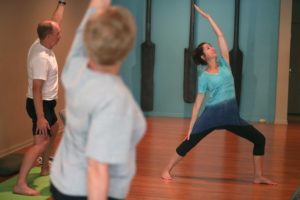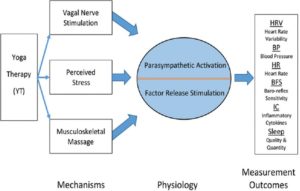Slow Aging with Meditation
By John M. de Castro, Ph.D.
“What we do know is that long-term engagement in mindfulness meditation may enhance cognitive performance in older adults, and that with persistent practice, these benefits may be sustained. That’s great news for the millions of aging adults working to combat the negative effects of aging on the brain.” – B. Grace Bullock
Human life is one of constant change. We revel in our increases in physical and mental capacities during development but regret their decreases during aging. The aging process, starting in the 20s involves a systematic progressive decline in every system in the body, the brain included. There is interest in finding ways to slow the aging process to improve longevity and health and mindfulness training has been found to do just that.
DNA methylation is an epigenetic mechanism used by cells to control gene expression. Epigenetic effects on the DNA arise from the environment and not the genes themselves. DNA methylation can fix genes in the “off” position, preventing them from carrying out their normal function. Indeed, the amount of methylation of DNA is associated with disease and aging. The greater the amount of methylation in the DNA the more disease. It can be thought of as a cellular marker of aging. It is sometimes considered as an epigenetic clock, the greater the age, the more methylation. It is possible that meditation practice slows the aging process by decreasing methylation in the DNA.
In today’s Research News article “Epigenetic clock analysis in long-term meditators.” (See summary below or view the full text of the study at: https://www.ncbi.nlm.nih.gov/pmc/articles/PMC5863232/ ), Chaix and colleagues obtained blood samples from meditation naïve individuals and long-term (> 3 years) meditators. The samples were assayed for methylation in the DNA and this was used to calculate the intrinsic epigenetic age of the individual (the age predicted by the degree of DNA methylation).
They found, as expected, that the greater the amount of methylation of the DNA the greater the actual calendar age of the participant for both groups. In the meditation naïve participants those over 52 years of age had significantly higher intrinsic epigenetic ages than those under 52. This is as expected. On the other hand, the long-term meditators over 52 years of age had equivalent intrinsic epigenetic ages to those under 52. The longer the meditators had been practicing the greater the reduction in their intrinsic epigenetic age. It was reduced by 0.24 years for each year of meditation practice.
These results suggest a possible mechanism by which meditation practice may slow the aging process. They suggest that meditation practice reduces the methylation in the DNA and perhaps, thereby, helps maintain the DNA’s functional integrity into higher ages. Stress is known to increase DNA methylation. So, it is possible that mindfulness practices reduce methylation in the DNA by reducing the physiological and psychological effects of stress. Regardless, the results suggest that meditation practice slows the changes in the individual’s genetic material that’s associated with aging.
So, slow aging with meditation.
“According to the National Institutes of Health, more than 20 million Americans practice some form of meditation to achieve greater peace of mind and enhanced sense of well-being. Now studies of the neurological differences between meditators and non-meditators, and studies of immune cell aging via telomere length in meditators and non-meditators, show that meditation can also affect the way we age.” – Seth Segall
CMCS – Center for Mindfulness and Contemplative Studies
This and other Contemplative Studies posts are also available on Google+ https://plus.google.com/106784388191201299496/posts and on Twitter @MindfulResearch
Study Summary
Chaix, R., Alvarez-López, M. J., Fagny, M., Lemee, L., Regnault, B., Davidson, R. J., … Kaliman, P. (2017). Epigenetic clock analysis in long-term meditators. Psychoneuroendocrinology, 85, 210–214. http://doi.org/10.1016/j.psyneuen.2017.08.016
Abstract
In this paper, we examined whether meditation practice influences the epigenetic clock, a strong and reproducible biomarker of biological aging, which is accelerated by cumulative lifetime stress and with age-related chronic diseases. Using the Illumina 450 K array platform, we analyzed the DNA methylome from blood cells of long-term meditators and meditation-naïve controls to estimate their Intrinsic Epigenetic Age Acceleration (IEAA), using Horvath’s calculator. IEAA was similar in both groups. However, controls showed a different IEAA trajectory with aging than meditators: older controls (age ≥ 52) had significantly higher IEAAs compared with younger controls (age < 52), while meditators were protected from this epigenetic aging effect. Notably, in the meditation group, we found a significant negative correlation between IEAA and the number of years of regular meditation practice. From our results, we hypothesize that the cumulative effects of a regular meditation practice may, in the long-term, help to slow the epigenetic clock and could represent a useful preventive strategy for age-related chronic diseases. Longitudinal randomized controlled trials in larger cohorts are warranted to confirm and further characterize these findings.
https://www.ncbi.nlm.nih.gov/pmc/articles/PMC5863232/






